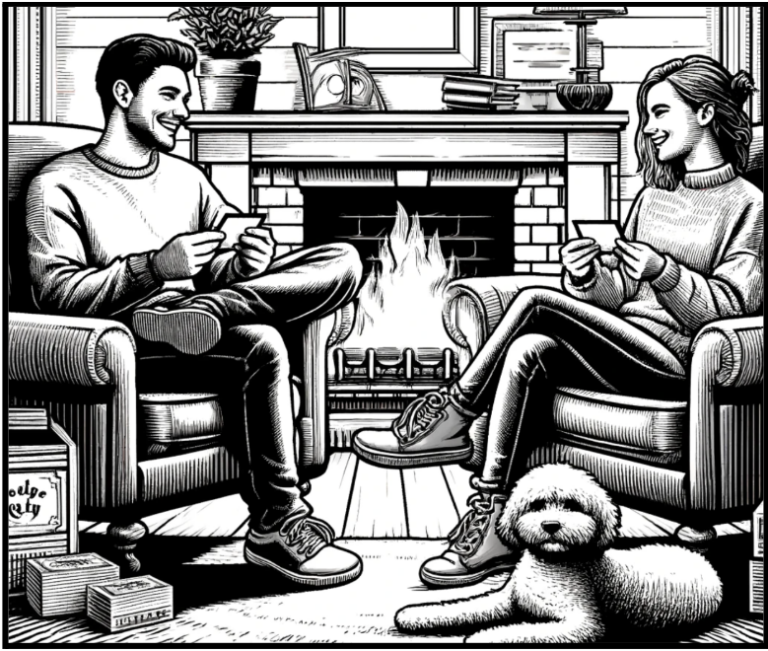Talking Big Ideas.
“These words like daggers enter in my ears.”
~ William Shakespeare
Jane Elliott had an idea.
She was a teacher in rural Iowa. Her students were third graders in the all-white town of Riceville. Martin Luther King Jr. had just been shot dead on a hotel balcony in Memphis.
Elliott realized her students, so young and innocent, would struggle to understand the magnitude of what happened. Prejudice was an abstract concept to them. She wanted to make it vivid.
The morning after the assassination she divided her kids into two groups: brown eyes and blue eyes. And she convinced them the brown-eyed kids were smarter.
“They’re the better people in this room.”
Blue-eyed kids were forced to sit in the back of the class. They had to wear special collars. Elliott watched as they became timid and meek, even those who were typically loud and dominant. “Friendships seemed to dissolve instantly as brown-eyed kids taunted their blue-eyed former friends,” she said. “I watched those kids turn into nasty, vicious, discriminating third graders . . . it was ghastly.”
The next school day she announced she was mistaken. The blue-eyed kids were better. Everyone with brown eyes had to wear the collars and sit in the back.
On both days, the “superior” children were cruel. And when they were labeled “inferior,” the kids self-described with words like sad, bad, and stupid – and did worse on tests.
Studies done 10 and 20 years later showed remarkable results. The students said the experience was profound and continued to guide them. As a group, they remained significantly less prejudiced than their peers who weren’t involved in the exercise.
Elliott succeeded in turning an abstract concept into an experience so vivid it would last a lifetime.
2,600 years before Elliott ran her experiment, a slave named Aesop told fables. His stories spread around the world and down through time. Today, they are as popular as ever. Why?
According to Yale scholar Eric Havelock, it’s because the fables use simple, vivid language.
Havelock shows that ancient stories from Aesop to Homer to the Old Testament share a common ingredient: they are filled with imagery and concrete details.
Abstractions disappear with time. Vivid stories survive. They are easy to understand, remember, and share.
Vivid imagery is the language of persuasion. It’s hard to get excited about abstract statistics and faceless causes. But a smiling 9-year-old girl with pigtails who needs a bone marrow transplant? She has our attention.
The renowned writing coach Jack Hart explains there are two distinct types of story narratives. He calls them summaries and drama. Our default is to share stories as summaries, where we speak in abstractions and present the story from a distant or objective vantage point.
By contrast, dramatic narratives “emphasize concrete details” and the audience experiences the story as if they are part of it, living inside it in real time. “True storytelling,” Hart says, “requires mastery of dramatic narrative.”
Imagine the Cleveland Browns win the Super Bowl this upcoming season. I could write: “The Browns won the game. The people in the stands watched. The people from Cleveland were excited.”
Alternatively: “Sixty thousand fans jumped to their feet, screaming and cheering wildly in a frenzy. In downtown Cleveland, people from all walks of life took to the streets to shout and dance together.”
The first version is a banal summary. The second offers imagery and detail the reader can see in their mind. We are designed to process visual information. Our brains are dedicated to vision more than anything else. Stories explained in a visual way are easy to absorb.
Consider how Mary Shelley introduces us to Frankenstein’s monster: “my candle was nearly burned out, when, by the glimmer of the half-extinguished light, I saw the dull yellow eye of the creature open. . . .” I feel like I’m there – and I’m scared!
Compare that to the nonsense spoken in the Dilbert cartoon above. There’s a website that generates similar corporate gobbledygook. All you have to do is push this button:
Try it. How many of the satirical, abstract, and incoherent phrases feel a little too familiar?
Effective storytellers focus on highlighting details that will resonate with their specific audiences. Concrete images connect audiences to the message as well as the messenger.
If you’re talking to kids, it could be about the toys they love. For parents, imagine bringing them to a powerful moment filled with emotion. Here’s Michelle Obama sharing vivid imagery every parent understands:
Our daughters . . . they are the heart of our hearts, the center of our world . . . when they set off for their first day at their new school, I will never forget that winter morning . . . I saw their little faces pressed up against the [car] window . . .
Samantha Wright, an executive from Chicago, begins her origin story like this: “It’s 4am on Saturday morning. My brother, sister, and I all pile into the back seat of our Aerostar minivan. We haven’t yet hit the gas station, but we can practically taste the white powder donuts that we know we’ll be picking up.”
I immediately see the donuts and excited kids. And wonder why they are up so early on a Saturday. I’m listening.
The economist Christine Lagarde began a speech in Brussels like this: “Last month, May 6, I almost choked on my morning yogurt when I saw the front page of a leading business newspaper. . . .” I want to know what the paper says!
Sharing vivid details can be unnatural for topics we know well. The more we understand something, the more we tend to think in abstractions. As the Heath brothers write in their classic book Made to Stick:
It can feel unnatural to speak concretely about subject matter we’ve known intimately for years. But if we’re willing to make the effort we’ll see the rewards: Our audience will understand what we’re saying and remember it. The moral of the story is not to dumb things down. Rather it’s to find a “universal language” that everyone speaks fluently.
That universal language will be vivid.
***
![]() IDEA
IDEA
Share vivid details. Avoid abstractions.
Consider a story you told recently. How can you retell it in a way that is more vivid?
***
For more on storytelling:
If you find this useful, please subscribe to our free weekly newsletter.






